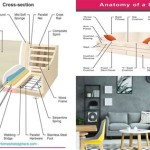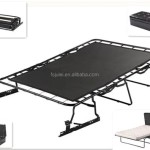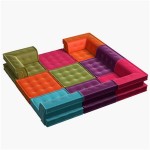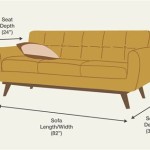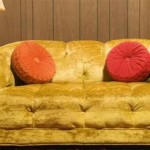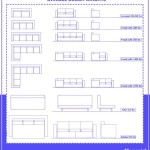Danish Style Sectional Sofas
Danish style sectional sofas represent a popular choice for contemporary living spaces. Characterized by clean lines, minimalist aesthetics, and a focus on functionality, these sofas offer both comfort and style. This article explores the defining characteristics, material considerations, and key aspects to consider when selecting a Danish style sectional sofa.
The core principle of Danish design is functionality. Every element serves a purpose, contributing to both the visual appeal and practical use of the piece. This philosophy translates into sectional sofas with streamlined silhouettes, avoiding unnecessary ornamentation. The focus remains on providing comfortable seating without compromising the overall aesthetic.
Minimalism plays a crucial role in Danish design. Clean lines and simple forms define the look, creating a sense of spaciousness and tranquility. This approach contributes to the versatility of Danish style sectionals, allowing them to seamlessly integrate into various interior design schemes, from mid-century modern to contemporary minimalist.
High-quality materials are a hallmark of Danish style furniture. Durable frames, often constructed from solid wood, provide a robust foundation. Upholstery choices range from premium fabrics like linen and wool to top-grain leather, emphasizing both comfort and longevity. The careful selection of materials contributes to the overall quality and enduring appeal of these sofas.
Neutral color palettes are commonly associated with Danish style sectionals. Shades of gray, beige, and white create a serene and inviting atmosphere. These neutral tones allow the sofa to serve as a versatile base, easily complemented by accent pillows and throws in bolder colors or patterns.
Comfort is paramount in Danish design. Cushions are typically plush and supportive, offering a comfortable seating experience. The sectional configuration allows for flexible arrangements, accommodating various room sizes and layouts. This adaptability makes Danish style sectionals a practical choice for both small apartments and larger living spaces.
The legs of a Danish style sectional often feature a tapered or splayed design, adding a touch of elegance and visual lightness. These legs, typically made from wood or metal, contribute to the overall aesthetic and raise the sofa slightly off the ground, creating a sense of airiness.
When selecting a Danish style sectional sofa, consider the size and layout of the room. Measure the available space carefully to ensure a proper fit. Consider the traffic flow and how the sectional will interact with other furniture pieces in the room. Choosing the right configuration, whether L-shaped, U-shaped, or modular, is essential for maximizing functionality and visual balance.
Upholstery choices significantly impact the overall look and feel of the sofa. Consider the durability and maintenance requirements of different fabrics and leathers. Linen and wool offer a natural, textured look, while leather provides a sleek and sophisticated aesthetic. Choose a material that complements the existing décor and suits the lifestyle of the household.
The color of the sectional sofa plays a key role in the overall design scheme. Neutral tones create a calming and versatile backdrop, while bolder colors can make a statement. Consider the existing color palette of the room and choose a shade that complements or contrasts effectively.
The legs of the sofa contribute to its overall style. Wooden legs offer a warm and natural feel, while metal legs provide a more modern and industrial aesthetic. Consider the existing furniture and décor when selecting leg material and finish.
Budget is an important factor to consider. Danish style sectionals are available at various price points, depending on the materials, construction, and brand. Establish a budget beforehand and explore options within that range.
Maintenance requirements vary depending on the upholstery material. Leather requires regular conditioning, while fabric upholstery may need occasional cleaning. Consider the ease of cleaning and maintenance when selecting a material, especially for households with children or pets.
Research different brands and retailers to compare prices, styles, and quality. Read customer reviews to gain insights into the durability and comfort of different models. Visiting furniture showrooms allows for firsthand experience with the sofa, assessing the comfort and quality of the materials.
Consider the overall aesthetic of the room when selecting a Danish style sectional. Choose a sofa that complements the existing furniture and décor, creating a cohesive and harmonious space. Think about the desired mood and ambiance of the room and choose a sofa that contributes to that atmosphere.
The placement of the sectional sofa within the room is crucial for optimizing functionality and flow. Consider the focal point of the room and arrange the sectional accordingly. Ensure adequate space for movement around the sofa and consider the proximity to other furniture pieces.

Danish Modern Mid Century Sectional Daybed Sofa Furniture Design Diy

2 Piece Retro Danish Style Sectional Sofa

My Husband Is Insisting On An Ugly Sectional Sofa Laurel Home

Danish Teak 2 Pc Sectional Sofa Hoopers Modern

Six Piece Mid Century Danish Modern Sectional Sofa By Hans Olsen For Bramin At 1stdibs

Discover Five Of The Best Modular Sofa Furniture Designs For Flexible Living Danish Design

Mid Century Modern Danish Selig Monroe 6 Pc Modular Sofa Sectional Ottoman 1970s Vintage Furniture

1950s Danish Teak Minerva Sectional Sofa By Peter Hvidt Orla Molgaard Nielsen Set Of 2 Chairish

Danish Style Mid Century Modern Walnut Sectional Sofa For At Auction On 21st October Bidsquare

1950 S Sectional Sofa 50s Vintage Danish Modern Lovely Mid Cen Century Furniture

